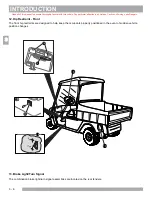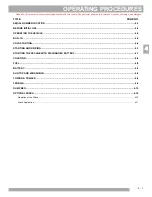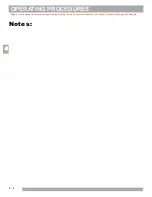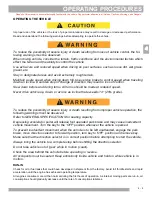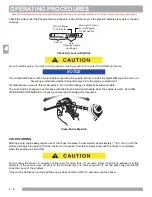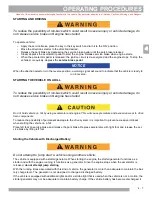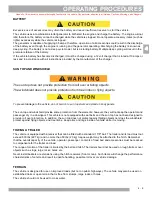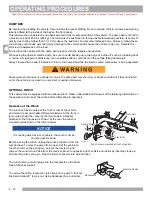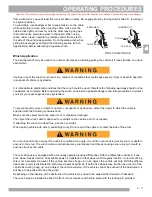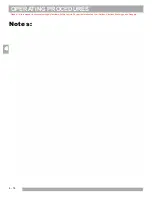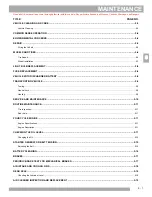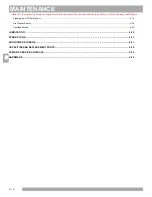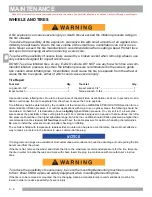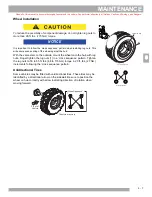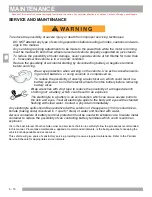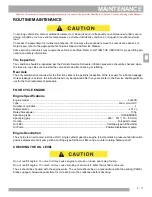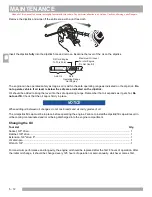
4 - 11
OPERATING PROCEDURES
Read all of this manual to become thoroughly familiar with this vehicle. Pay particular attention to all Notices, Cautions, Warnings, and Dangers.
4
from winch drum. Leave at least five turns of cable on drum. Re-engage drum by turning clutch knob 90°, returning it
to original position.
To wind cable, use handsaver bar to keep tension on the cable
while activating remote. When winding cable, make sure the
cable winds tightly and evenly onto the drum leaving no gaps
that could cause premature wear to the cable. When using
winch under a load, operate the remote control from as far to
the side of the vehicle as possible. Do not operate winch while
sitting in passenger seat. Read the following section (Winch
Applications) before attempting to operate winch.
Winch Application
The optional winch may be used for a number of purposes, including pulling the vehicle if it loses traction on unsuit-
able terrain.
Improper use of the winch could result in a number of conditions that could cause severe injury or death to operator,
occupants of vehicle or bystander.
It is impossible to predict all conditions that the winch could be used, therefore the following warnings should not be
considered as complete. Before operating the winch, consider the possible dangers and take precautions to protect
yourself, your passenger and any bystanders.
To prevent severe injury or death to operator, occupants or bystanders, select the object to which the cable is
attached with the following considerations:
Make sure the object cannot be pulled over or otherwise damaged.
The object the winch cable is attached to could fall on the vehicle and it’s occupants.
If attaching the winch to a dead tree, a section could fall.
When pulling vehicle with winch, pull straight only. Do not permit the cable to contact the side of the drum.
Do not pull vehicle at an angle. If the vehicle is pulled at an angle, it could turn over causing severe injury or death to
anyone in the area. The winch cable could also become overstressed and break causing severe injury or death to
anyone struck by the cable.
The rear drive axle is equipped with a manually operated locking differential. With the differential unlocked, if one
drive wheel looses traction, all available power is transferred to that wheel until it regains traction. In normal driving
this is not a problem. However, if the vehicle becomes ‘hung up’ on an object, the vehicle will stop. With the differen-
tial locked, power is distributed to both drive wheels at all times. If both drive wheels lose traction as a result of the
vehicle becoming ‘hung up’ on an object, the vehicle will stop. If the vehicle cannot be pushed off the obstruction, it
will have to be pulled off using the winch.
Depending on the location of the obstruction, the vehicle may need to be pulled either forward or backward.
The winch may be installed in either the front or rear receiver and held in place with the locking pin provided.
Pull out
ENGAGED
Clutch Knob
LOCKED OUT
Turn 90
û
Winch Clutch Knob


